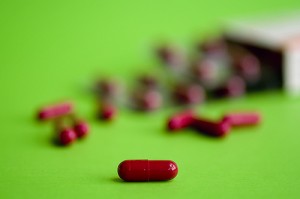| Blood Pressure, Blood Sugar and Vitamin D Numbers This articles examines blood pressure, blood sugar and vitamin D numbers. Also advice on how to keep these numbers in a normal range. |
| How Beads of Courage Helps Sick Children Cope With Illness The Beads of Courage program offers sick children in the United States hope and help. Find out more about the Beads of Courage program and help if you can. |
| Step by Step Guide to Quitting Smoking 7 steps simplify the difficult process of quitting smoking. Proper planning and developing good long-term habits increase the chance of success. |
| Surgical Complications in Orthopaedics Orthopaedic surgery is not risk-free. Don't agree to have surgery until your surgeon discusses these surgical complications with you. |
| Medical Treatment of Impotence or Erectile Dysfunction (ED) Male Impotence, sexual dysfunction or Erectile Dysfunction (ED) can be caused by multiple factors. So a holistic approach is needed to treat it. |
| How to Quit Smoking and the Benefits of Quitting Smoking cessation methods, supported by statistics and medical research, aid people in quitting. The benefits of quitting also provide motivation. |
| Medical Causes of Impotence - Erectile Dysfunction (ED) Sexual dysfunction or impotence, especially erectile dysfunction (ED), can be a sign of serious underlying diseases such as heart disease and diabetes. |
| Preparing For Blepharoplasty Sagging Upper Eyelid Surgery Stopping blood thinners and starting eye drops are only part of the process for preparing for droopy eyelid surgery. |
| Helping Paramedics Help You A look at the actions you can take before you ever need to call 911 and when the paramedics are on their way in order to save time and, possibly, a life. |
| Blood is the Liquid of Life Blood contains plasma and cells that are vital to maintaining life. Learn about the functions of blood and why it's so important to the body. |
| How To Stay Safe and Prevent Drug Errors Flu season is the most prevalent time for prescription medication mix-ups. Protect yourself from lethal medication errors and possible malpractice suits. |
| BMI and Health Body Mass Index is a calculation involving a patient's weight and height. This is often used as a predictor of health. Learn how to calculate and use BMI. |
| Home Health Testing Kits Testing for cholesterol and glucose at home is a convenient way for patients to take control of their health. |
| What is Phlebotomy? Phlebotomy is the process of obtaining blood through a puncture of the veins. Learn why this procedure is necessary and what it entails. |
| Proper Disposal of Prescription Medication or Prescription Drugs Flushing prescription medications down the toilet is no longer recommended, yet there are ways to safely dispose of medications from home. |
| Falls are Preventable – Find Out How Become informed about keeping yourself safe, preventing falls, making a plan to get help and what you can do to minimise harm if you do fall. |
| Childhood Obesity Childhood obesity is epidemic right now and contributes to many serious health problems. These factors should be understood by parents to help their kids. |
| Does Sunscreen Give You Cancer? Although direct sunlight can lead to health problems, a small amount will boost vitamin D levels. |
| Flavoring Prescription Medications at the Pharmacy Many pharmacies are able to flavor liquid prescription medications. Flavoring improves the taste and tolerability of certain drugs. |
| Being An Organ Donor: Facts and Myths There are many myths regarding organ and tissue donation, but it is important to find the truth when it comes to being an organ and tissue donor. |

 Many studies have positively linked physical fitness and academic achievement in elementary and middle-school aged children. But a report from the American College of Sports Medicine indicates that college students can also increase their grade point average (GPA) by engaging in vigorous exercise.
Many studies have positively linked physical fitness and academic achievement in elementary and middle-school aged children. But a report from the American College of Sports Medicine indicates that college students can also increase their grade point average (GPA) by engaging in vigorous exercise. Currently, more than 33 million people worldwide are living with human immunodeficiency virus (HIV) infection. Each year, there are nearly 3 million new infections. The growing worldwide burden of this infection, which causes acquired immune deficiency syndrome (AIDS), has prompted researchers to investigate novel approaches to infection control and prevention. A recent investigation published by the New England Journal of Medicine, which will likely be known as a landmark study in HIV/AIDS research, reported that a daily dose of a prophylactic pill can prevent the spread of HIV before exposure to the virus.
Currently, more than 33 million people worldwide are living with human immunodeficiency virus (HIV) infection. Each year, there are nearly 3 million new infections. The growing worldwide burden of this infection, which causes acquired immune deficiency syndrome (AIDS), has prompted researchers to investigate novel approaches to infection control and prevention. A recent investigation published by the New England Journal of Medicine, which will likely be known as a landmark study in HIV/AIDS research, reported that a daily dose of a prophylactic pill can prevent the spread of HIV before exposure to the virus. Have you ever noticed that whether you are learning to drive your new car or learning to speak a new language or even when you are learning to apply a new behavior, it challenges many parts of your brain? While learning new skills or modified behaviors, your brain experiences progressive stages of development of competence. As your brain follows step-by-step instructions, your body learns new muscle movements and thought processes on how to apply them in practice. The new skill now becomes more like second nature. You no longer have to think while enacting your newly learnt skill or behavior. If the human brain could understand the stages of competence development, it may acquire the infinite power to tweak and adjust the application of new skills.
Have you ever noticed that whether you are learning to drive your new car or learning to speak a new language or even when you are learning to apply a new behavior, it challenges many parts of your brain? While learning new skills or modified behaviors, your brain experiences progressive stages of development of competence. As your brain follows step-by-step instructions, your body learns new muscle movements and thought processes on how to apply them in practice. The new skill now becomes more like second nature. You no longer have to think while enacting your newly learnt skill or behavior. If the human brain could understand the stages of competence development, it may acquire the infinite power to tweak and adjust the application of new skills. Napping sounds like just the thing for babies and elderly, but even healthy adults can rely on a daytime snooze to improve their mood, alertness, and memory. Napping has been shown to
Napping sounds like just the thing for babies and elderly, but even healthy adults can rely on a daytime snooze to improve their mood, alertness, and memory. Napping has been shown to  “Prescribed psychotropic medications are now high on the research agenda,” assert
“Prescribed psychotropic medications are now high on the research agenda,” assert